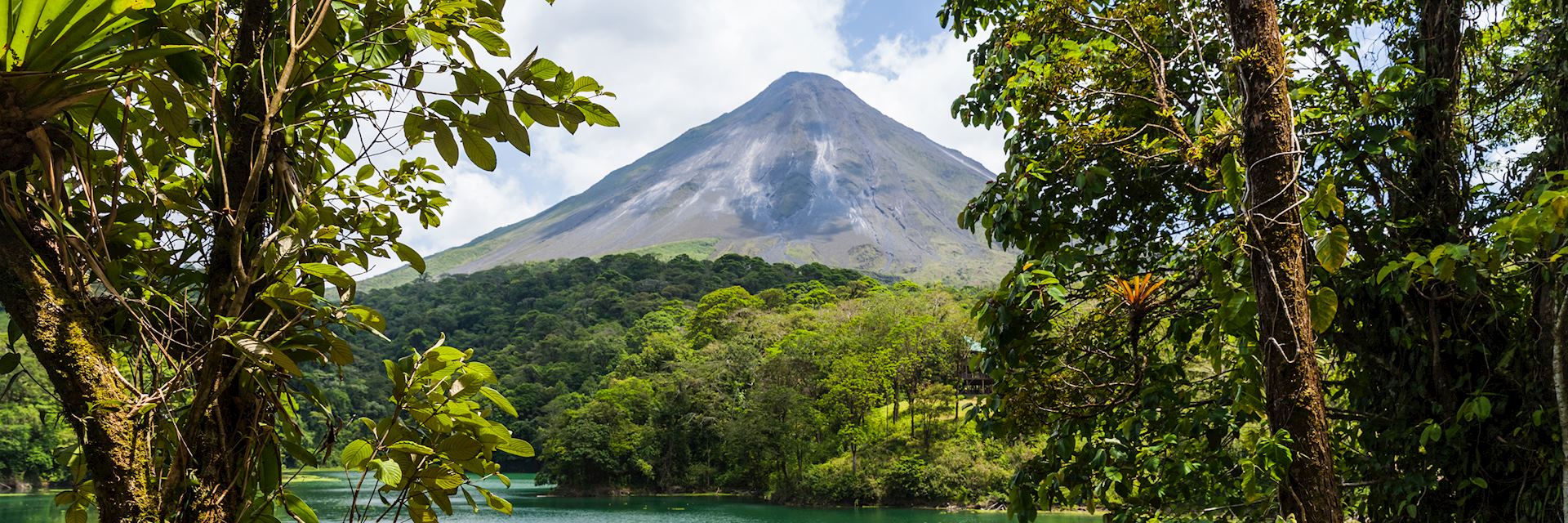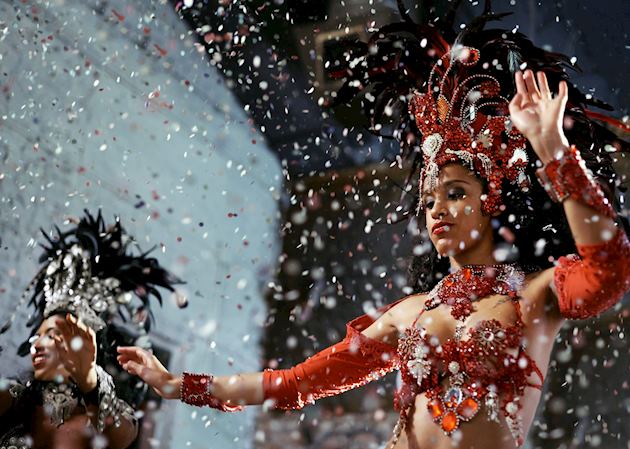With so many places around the world that we’re told we must see by friends, family, and the media, it can sometimes feel like you’re simply following the herd to photograph the same sights and enjoy the same experiences. But, what if you strayed outside the box and took a different path?
Here, we share ten countries, regions, and routes that may not immediately spring to mind when you’re planning a trip, but can be just as rewarding as big-name destinations. And, because our specialists haven’t overlooked them on their travels, they can suggest the best ways to experience them.
Zimbabwe
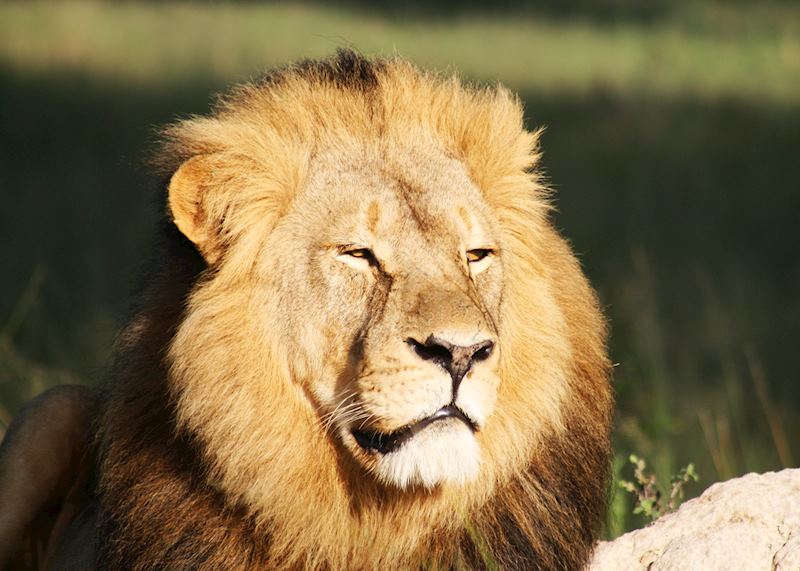
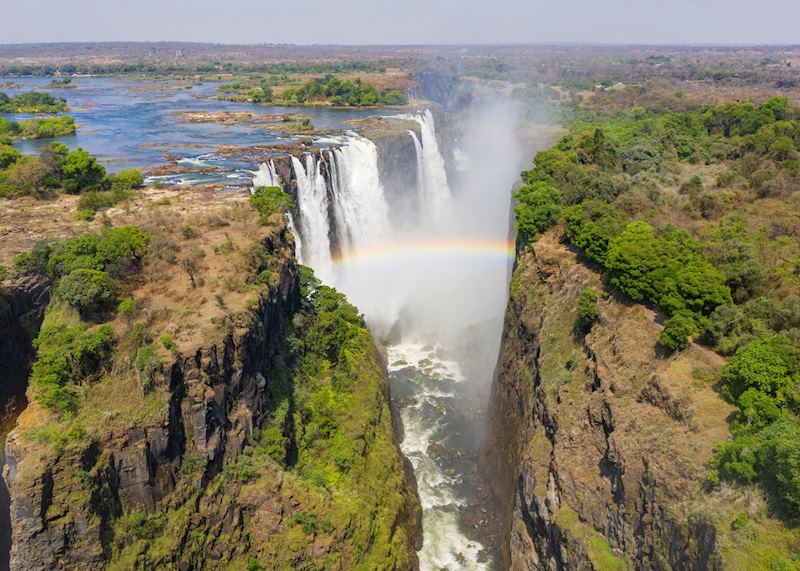
Because Zimbabwe is a less obvious choice for a safari compared to the likes of South Africa and Tanzania, you’ll often get wildlife sightings to yourself. Hwange National Park is the flagship area for spotting big cats, elephant, giraffe, and wild dog on game drives with some of Africa’s most highly trained guides.
You can get close to vividly plumed birdlife and see the beady eyes of hippo on boat safaris along the Zambezi River in Mana Pools National Park. And, on walking safaris, you’ll learn to identify smaller species while enjoying the sounds of the bush without the rumble of an engine.
Camps are intimately sized and designed to have minimal impact on the environment. It’s also easy to combine a safari here with a visit to Victoria Falls, which straddles the Zimbabwe-Zambia border.
What the experts say:
‘A safari in Zimbabwe feels truly authentic — you really feel you’re out in the wilderness. Add to that the exceptional guides, whose passion and knowledge bring your experience to life.’ — Amelia, Southern Africa specialist.
When to go
You’ll find plenty of wildlife whenever you visit Zimbabwe, but the best time for a safari is from July to October, when dry conditions mean animals gather around vital water sources, making them easier to spot. Migratory birds are present from November to February. Or, to see Victoria Falls at its best, visit between May and September.
Top festivals and events for Zimbabwe
- The annual game count in Hwange National Park takes place in September — you can join park rangers at waterholes as they count animals that pass through.
- Victoria Falls is at its prime between June and August, when the water level is high but not enough to obscure your views.
- Migratory bird species boost numbers between November and February.
Bhutan
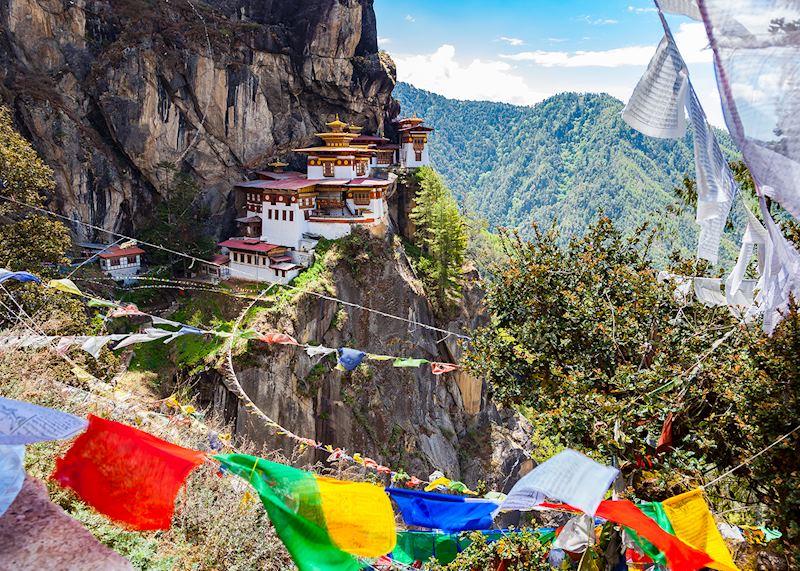
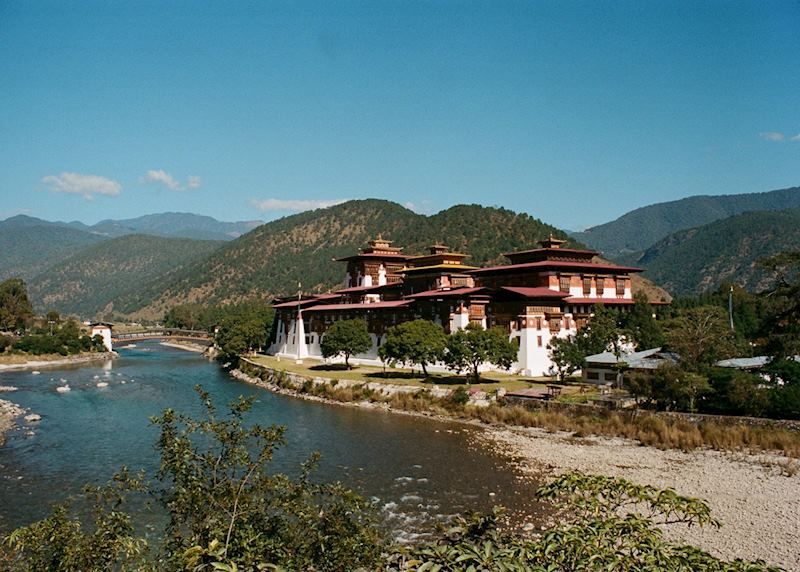
After being closed to the outside world from March 2020 to September 2022, this enigmatic mountain kingdom is keener than ever to limit visitor numbers with a strict entry policy and daily Sustainable Development Fee. While it boasts mountainscapes that rival Nepal’s, those who make the journey will also find a country rich in character.
Dzongs (fortresses) like the giant Punakha Dzong and chortens (shrines) dot the hillsides, valleys bloom with spring wildflowers, and you can gain an insight into Buddhist life by visiting tiny villages strung with prayer flags and staying in characterful teahouses.
Perhaps Bhutan’s only well-known sight is the Tiger’s Nest Monastery, perched precariously over a cliff near Paro. You’ll likely spend the rest of your time on remote hiking trails or simply soaking up the scenery. Your visit might also coincide with Thimphu’s weekend market and one of the many tshechus (festivals).
What the experts say:
‘Few people get a Bhutan stamp in their passport, but there’s something so special about this staunchly independent, traditional country which measures its progress by a Gross National Happiness scale.’ — Alison, Bhutan specialist.
When to go
Fresh, clear air and sunny skies make October to December and March to April the ideal times to visit Bhutan. Heat, humidity and monsoon rains mean it’s best to avoid May to September.
Top festivals and events for Bhutan
- In November, the Phobjikha Valley is filled with black-necked cranes which migrate from Tibet to perform elaborate mating dances. Considered a sacred bird, their arrival is marked by festivals in the monasteries that dot the valley.
- The most impressive tshechus takes place in Paro’s monasteries in March and April, on the tenth day of each month, with traditional mark and folk dancing, ceremonies, blessings, and rituals led by monks. Each monastery has its own set of rituals, which can range from offering noodles to guests to the throwing of dough balls.
Costa Rica
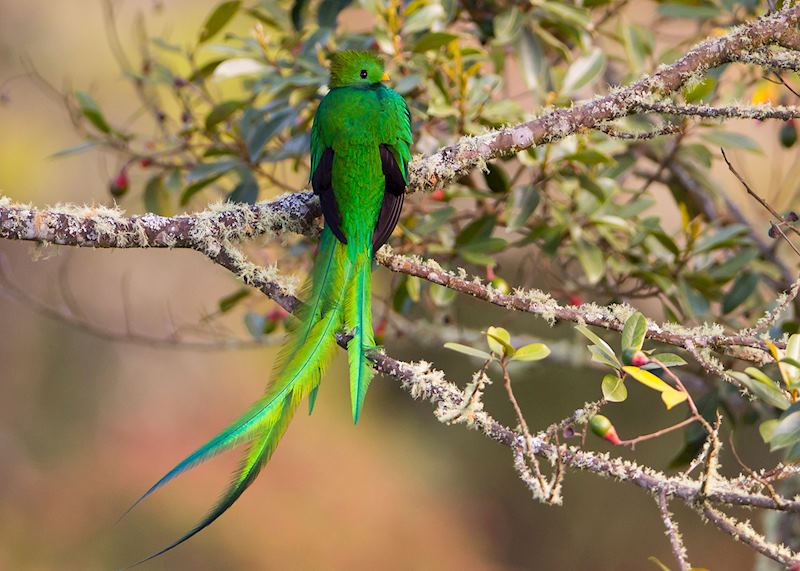

A well-trodden trail through Costa Rica usually revolves around Monteverde’s cloudforest, the Arenal volcano region, and the beach at Manuel Antonio. But, there are more serene (and often more fulfilling) alternatives.
If your heart is set on seeing the resplendent quetzal, you’d do better to visit the cloudforest of San Gerardo de Dota than Monteverde. Your lodge won’t have any bells and whistles, but you will have expert birdwatching guides. Quetzals are often spotted here feasting on the local fruit trees.
Arenal is a hub for activities like rafting, but the Pacuare River in the Turrialba Valley has some of the best white-water experiences in the country. And beach-wise, rather than heading to Mexico’s well-populated sands, consider Costa Rica’s more rugged Dominical, where you can go whale-watching, or relax at the surfers’ town of Malpais.
What the experts say:
‘I love how nature runs rampant in Costa Rica: you might wake to the cries of howler monkeys, and even a simple roadside pitstop can turn into a wildlife-watching opportunity.’ — Nik, Costa Rica specialist.
When to go
July to August is a great time to see humpback whales in Dominical.
Top festivals and events for Costa Rica
- Día de los Boyeros, in March, is a celebration of oxcart drivers — in San Antonio de Escazú you can watch a parade of beautifully decorated oxcarts as well as driving competitions and dancing.
The Silk Route


Emerald steppes, lake-filled alpine valleys, snow-topped mountains, and shining clusters of mosques, madrasas, and minarets rising from flat desert: like other great journeys such as the Trans-Siberian Railway, the Silk Route offers a smorgasbord of experiences, cultures, and landscapes. Following this ancient trade route will grant you at least four passport stamps as you pass through Kazakhstan, Kyrgyzstan, Uzbekistan, and Turkmenistan on lengthy but scenic drives.
Along the way, you can stay in a traditional yurt camp with nomads and hike through glacial valleys and wildflower meadows. And we recommend taking time to explore Bukhara, which dates from the Middle Ages, and the long-abandoned ghost town of Merv.
There’s also clay-built Khiva and the shining, mosaic-clad architecture of Samarkand where you can stroll across large public squares that have hosted important ceremonies over the centuries.
What the experts say:
‘You can slice and dice the Silk Route in various ways. I suggest starting in Kazakhstan, crossing into Kyrgyzstan, then journeying through Uzbekistan, briefly visiting Turkmenistan while you’re there.’ — John, Central Asia specialist.
When to go
We recommend April to early June or September to October, when it’s warm but not as hot as between late June and August. However, if you want to drive over Kyrgyzstan’s mountain passes, wait until June, when the snow will have thawed.
Top festivals and events for the Silk Route
- If your Silk Route journey includes time in Mongolia, you could celebrate Naadam, which takes place in July and features the traditional Mongolian games of horse racing, wrestling, and archery.
- Uzbekistan hosts an international world music festival, Shark Taronalari, each summer in Samarkand, featuring traditional folk music performances.
- Nooruz is a celebration of springtime across Central Asia in March, usually featuring song, dance, local food, and traditional games.
Northeast India
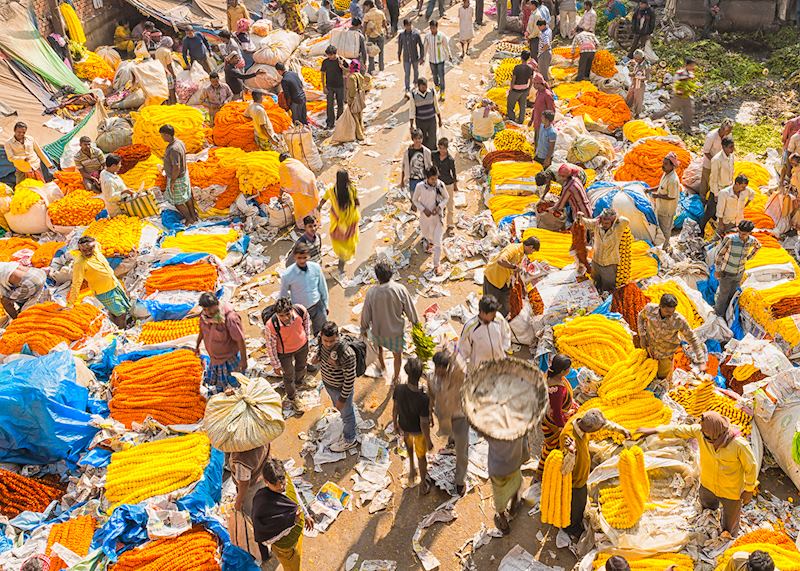
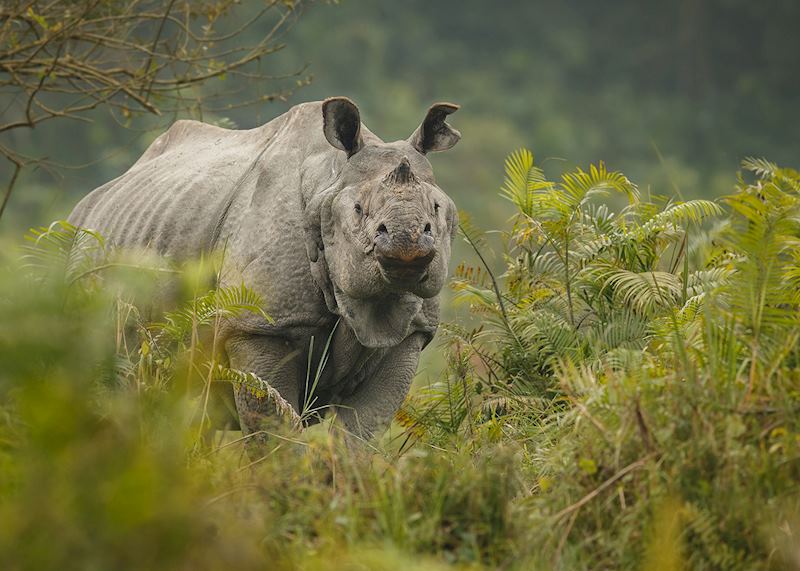
Venture to this lesser-trodden corner of India and you’ll find the peaceful tea estates of Assam and Darjeeling, where you can sip the beverage in its birthplace. Cruising down the Brahmaputra River gives you views over fertile plains, green rice fields, tiny villages, and distant mountains — you might even spot Ganges river dolphins from the deck.
You can also enjoy game drives in search of one-horned rhino in Kaziranga National Park, or hike in the shadow of Kangchenjunga, the world’s third highest mountain.
It’s not all rural life, though. Calcutta is a blend of British-colonial architecture, with sizzling street food stalls and flower markets. The city’s best explored on an early morning walking tour that includes tastings of mishit doi, a sweet fermented yoghurt, alongside tea served in a traditional clay pot.
What the experts say:
‘Taking you beyond India’s more heavily trodden routes, a trip through northeast India, for me, combines some of the best experiences across the subcontinent, all in one region. You can spot rhinos on safari, see some of the highest mountains in the world, laze among lush tea estates, and dive into the cacophony of Indian markets — all with a feeling of exploring a hidden part of this vast country.’ — Hannah, India specialist.
When to go
October to March sees warm days and cool evenings, making it an ideal time to explore Northeast India away from searing heat or monsoon rains.
Top festivals and events for northeast India
- The Durga Puja is Calcutta’s most important festival, usually occurring in October. This ten-day Hindu celebration of the goddess Durga is marked with feasts, performances, and gift-giving, with large clay sculptures displayed in homes and temples across the city. The highlight is the final day, where the clay idols are paraded through the city and immersed in the river — a symbol of the goddess’s return home.
- In November or early December each year, tea industry experts and enthusiasts gather for the Teesta Tea Festival, where you can join tasting sessions, exhibitions, and talks.
Uruguay
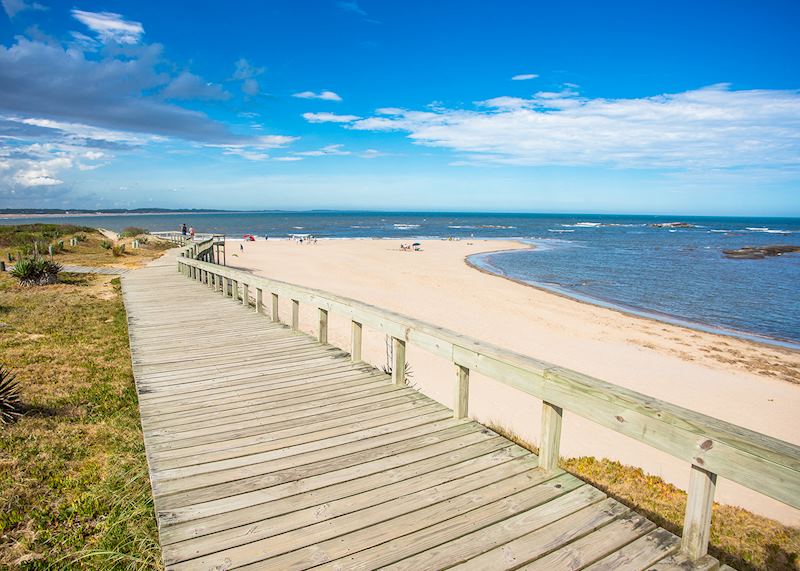
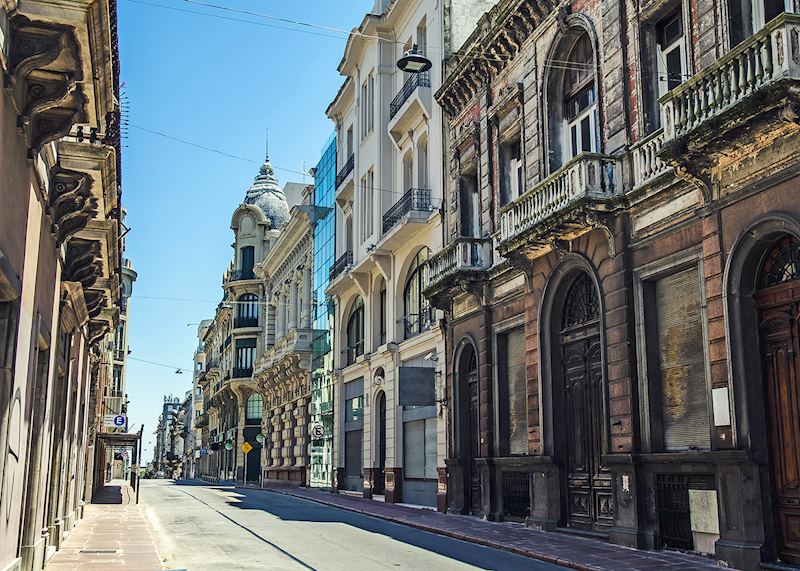
This diminutive, easily overlooked nation is a box of delights. Windswept pampas to pound over on horseback, state-of-the-art eco-wineries for tasting fine Tannats, losing yourself in the nooks and crannies of the Portuguese colonial town of Colonia…
Uruguay lies adjacent to popular Argentina and Brazil, but has a very different feel — it’s as if the volume’s been turned down. Begin in the relaxed capital of Montevideo where, instead of crowds and traffic, you’ll find beaches full of people playing soccer and volleyball along the Río de la Plata.
But, out of all Uruguay’s stretches of sand, José Ignacio, on the Atlantic coast, is our pick: understated and full of art galleries. Just inland lies Estancia Vik, a ranch-style property that’s lovingly adorned with local art, and where you have the chance to ride with gauchos or watch a polo match.
What the experts say:
‘Uruguay is a fascinating mix of Latin mentality and culture, along with a well-off population, a productive economy, and very progressive politics. It’s also the most relaxed country I’ve ever visited.’ — Melissa, South America specialist.
When to go
Late November or early December — expect pleasant weather, but the beach-going crowds won’t arrive until later in December or January.
Oman
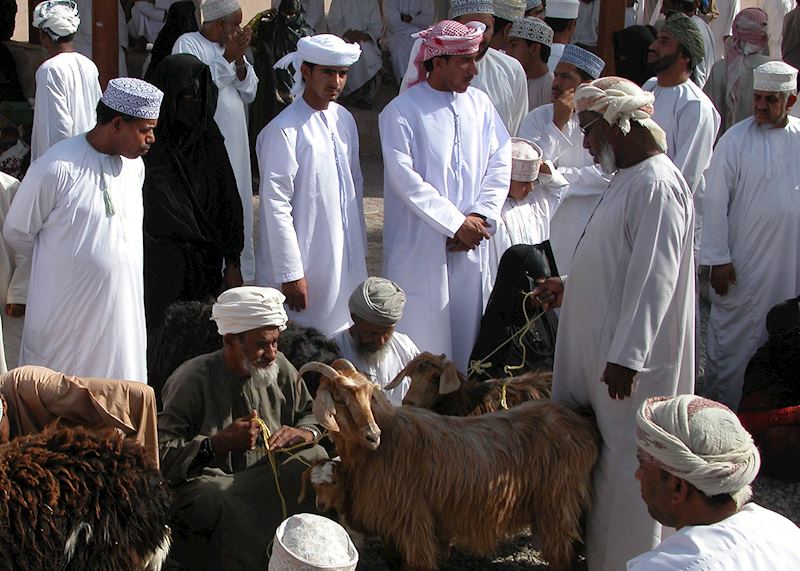
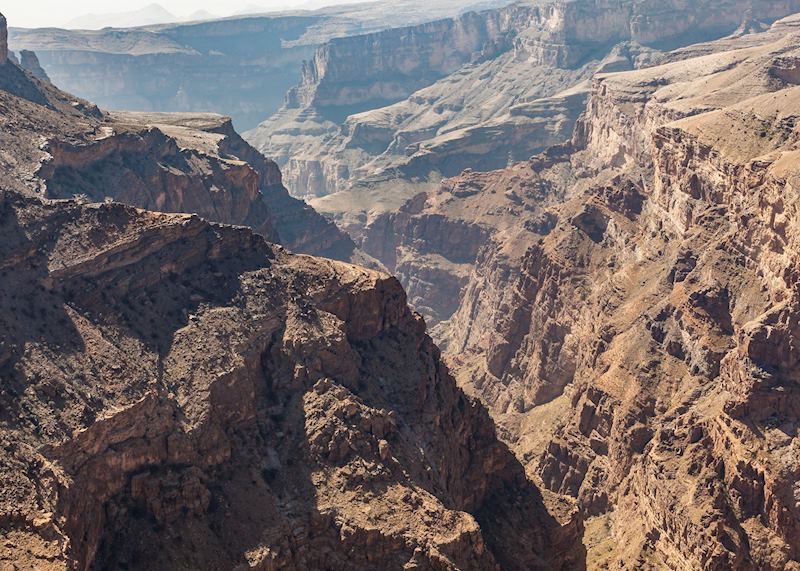
With no big-name sights like Egypt’s pyramids or Jordan’s Petra, Oman has remained under the radar. It’s perhaps the best-kept secret in the Middle East, with a visit giving you the chance to experience unspoiled deserts, beaches, and mountains. Because it hasn’t had to adapt to influxes of visitors, it’s all served with a slice of authentic culture.
Stretched along the coast of the Arabian Sea, the gleaming white city of Muscat gives you a chance to explore the main souq, fish souq, forts, and one of the biggest mosques in the world. Outside the capital, you’ll find ancient tombs, abandoned fortresses, hidden wadis, Wadi Ghu’s huge mountain canyon, and Nizwa where goats and camels are still auctioned on Fridays. In the Wahiba Sands, you can ride a 4x4 to the top of a dune to watch the sunset.
What the experts say:
‘Something that surprised me about Oman, and specifically the Wahiba Sands, is how diverse the ecosystem is — there are 150 plant species, 200 mammal species, and many birds and reptiles all living alongside several thousand Bedouin people.’ — Sophie, Oman specialist.
When to go
For warm but not sweltering temperatures, the best time to visit Oman is October to April. January and February are the only months you might encounter any rain and it can get cold in the mountains. The exception is Salalah, on the south coast, where the monsoon season lasts from June to September.
Top festivals and events for Oman
- Muscat Festival takes place every February for a month of celebrating the country’s art and culture.
- March and April marks the rose-blooming season in the Jebel Akhdar Mountains.
- You can witness the apricot harvest in May or the autumn harvest of pomegranates, olives, walnuts, and grapes in September and October.
Samoa

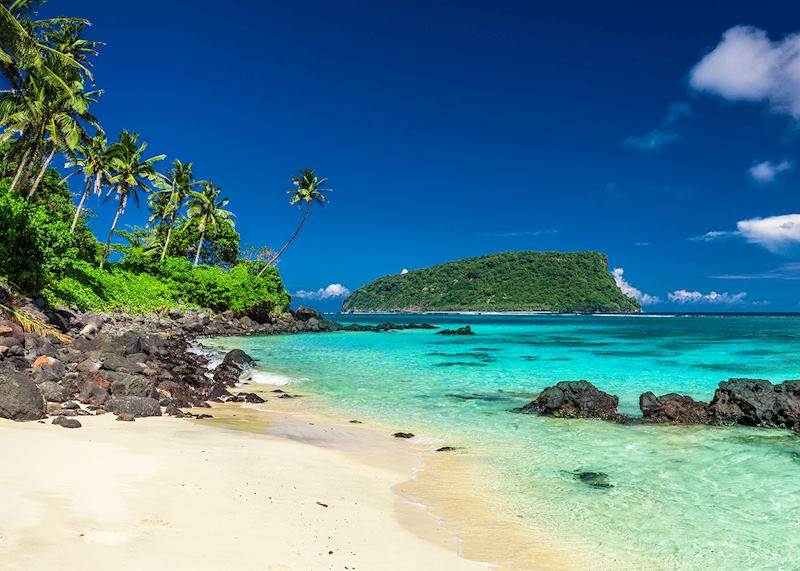
Samoa offers sleepy villages where the churches ring with song on Sundays, jungle waterfalls, and deserted beaches curling around sheltered ocean lagoons. It has a true off-the-map feel if you’re looking for a chance to indulge in the sun-drenched beaches of the South Pacific but prefer to be somewhere almost entirely undeveloped.
It’s easy to laze away your days on black-sand beaches overlooking the blue waters of the Pacific. But, there’s plenty to explore, too. Geological features include To Sua Ocean Trench and the lava-tube rocks of Alofa’aga.
You can take a guided tour of Apia, the adopted homeland of Robert Louis Stevenson, and visit his grave and former house, now a museum, as well as local markets. Or, you might venture into the pristine nature of the archipelago, journeying through steep mountains, mangroves, and tropical gardens with a guide.
What the experts say:
‘I always come back from Samoa with stories to tell — it’s the sort of place where you find yourself chatting to someone then next thing you know you’ve been invited back to theirs for dinner. It’s a relatively undeveloped island, so things are sometimes a bit up in the air and you might find you have to stop your car to let sheep cross the road, but I find it’s all part of Samoa’s charm.’ — Joe, South Pacific specialist.
When to go
The islands are near the Equator and temperatures remain balmy year-round, but the best time to visit Samoa is from May to November, when you’ll encounter less humidity and rain.
Top festivals and events for Samoa
- Visit at the beginning of June to help celebrate the island’s Independence Day.
- In early September you can join in with Apia’s week-long Teuila Festival, which involves music, sports, and dancing.
- Anzac Day, on April 25th, is marked in Apia with military parades and remembrance ceremonies.
South Korea
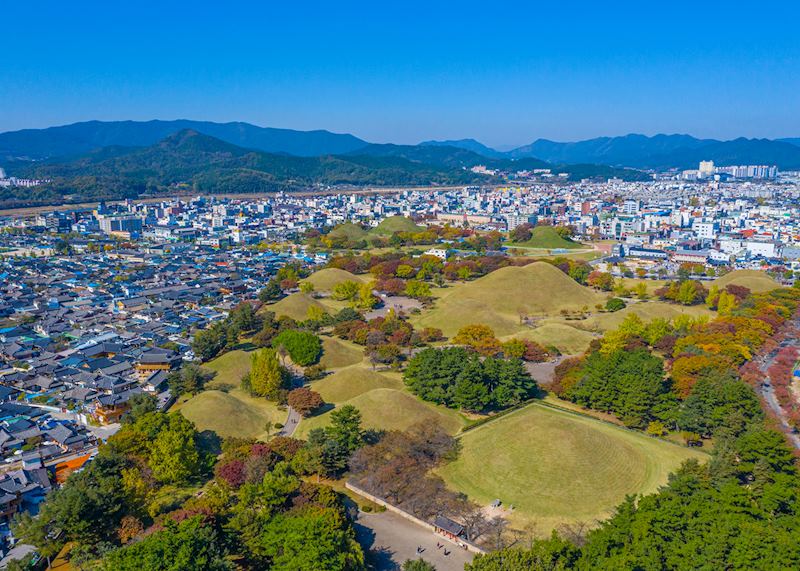
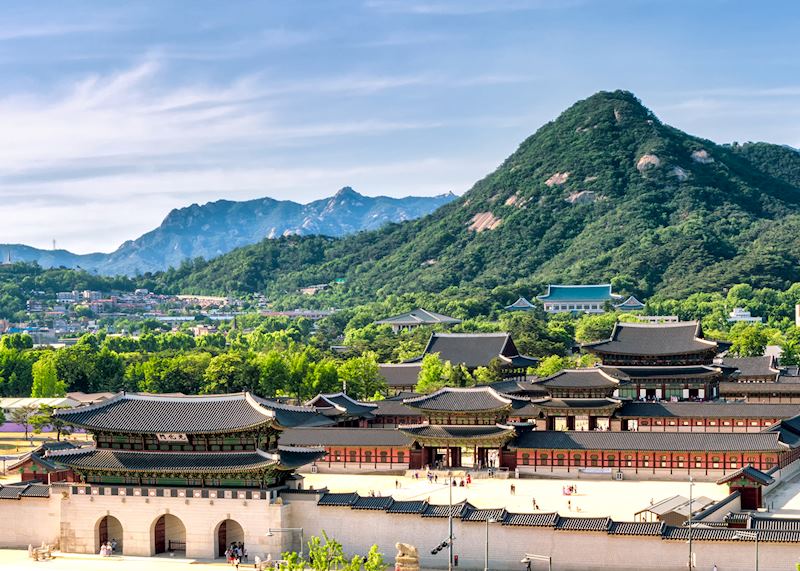
South Korea effortlessly combines temples and palaces dating back a millennium with futuristic skyscrapers. The country often draws comparisons with nearby Japan, but a visit here offers a less crowded, less expensive, and wholly different experience.
In Seoul, you can take a tasting tour through the fragrant street foods, then visit 14th-century Gyeongbokgung Palace. Admire the traditional Korean architecture in Insadong and Bukchon Hanok Village and visit Namdaemun Market to browse crafts, food, and modern fashion. Or, you could delve into the country’s more complex politics at the War Memorial or the North Korean border zone.
Outside the capital, you might hike to mountainside grottoes for views of the rugged coast, explore the volcanic landscape of Jeju Island, or visit Gyeongju’s Silla-dynasty burial chambers. And in Busan, you can take a cruise around the bay to see the city from the water.
What the experts say:
‘South Korea isn’t easy to define, and that’s what appeals to me. You’ll find Southeast Asian influences in the cuisine, while the architecture in its cities rivals that of Japan. There are also Chinese touches to the country’s Buddhist temples, and a coastline riddled with volcanic features akin to what you find in Indonesia.’ — Rebecca, South Korea specialist.
When to go
The best time to visit South Korea is September to November, when the changing leaves transform the landscape. For cherry blossom season, plan your trip between March and May. You’ll find good conditions for hiking in June, July, and August, though it can get humid outside the mountains.
Top festivals and events for South Korea
- During Jeju Fire Festival, between late February and early March, you can enjoy fireworks, K-Pop concerts, and a huge bonfire on Jeju Island to celebrate the arrival of spring.
- Early May sees the Yeon Dueng Hoe Lotus Lantern Festival take place in Seoul, featuring a procession of lanterns through the city streets. Or, visit in November for the Seoul Lantern Festival, when large lanterns are set in the Cheonggyecheon Stream.
- Enjoy the Busan Fireworks Festival in October, when fireworks and a laser light show illuminates the sky at Gwangalli Beach.
Saint Kitts and Nevis


Silver-sand beaches shaded by feathery palms, sun-warmed turquoise waters, and a convivial island culture — the tiny nation of Saint Kitts and Nevis is a classic Caribbean destination, though it sees fewer visitors than the region’s big-hitters like Jamaica, Barbados, and the Bahamas.
You can, of course, spend your days lounging on soft sand, snorkelling in the crystal-clear waters, and sipping rum in the sun. However, if tropical idylls wear thin, you’ll find a rich heritage of sights. Saint Kitts boasts the Caribbean’s only original narrow-gauge railway, and you can explore Brimstone Fort, a UNESCO World Heritage Site.
US founding father Alexander Hamilton was born in the tiny capital of Charlestown, and Admiral Lord Nelson lived here — his one-time estate has been converted into an elegant hotel. You can also hike around the Nevis Peak volcano and among the jungle that flourishes on the volcanic soil.
What the experts say:
‘Saint Kitts and Nevis boast a range of beaches, some long and golden, others dark and volcanic. But, I wouldn’t go just for the coast. You can tour 19th-century battlements, take a cycle ride around Nevis with a guide, and visit the Botanical Gardens of Nevis to see rare flora, birds, and butterflies.’ — Ludo, Caribbean specialist.
When to go
There’s no real best time to visit Saint Kitts and Nevis, which enjoys tropical temperatures all year. The sunniest months are February to May, but even if you go between July and November, you’re likely to only encounter brief rain showers. Hurricanes are a risk, primarily in September and October.
Top festivals and events for Saint Kitts and Nevis
- Emancipation Day falls at the beginning of August to celebrate the liberation of enslaved people across the Caribbean with a long-weekend of calypso parades and street jamming.
- In May, Labour Day sees parades by workers’ unions and political parties across Saint Kitts, while Nevis hosts community barbecues and street bands.
- New Year’s Day, directly followed by Carnival Day, see parades, street dancing, and calypso competitions.
Was this useful?

